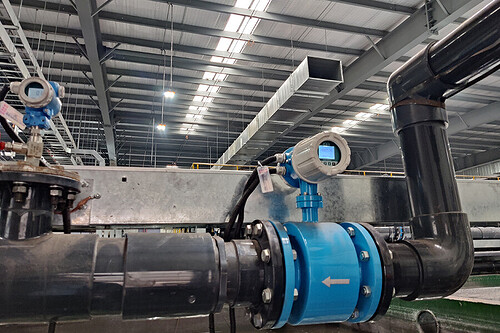In water and wastewater management, accurate and reliable flow measurement is of utmost importance. Without accurate flow measurement, it is impossible to control and optimize processes, leading to inefficient operations, increased costs, and potential environmental hazards.
Magnetic flow meters have gained popularity in recent years due to their ability to provide accurate measurements, but like all technologies, they have advantages and limitations.
In this article, we will discuss the advantages and limitations of magnetic flow meters in water and wastewater applications. See more about mag flow meter
What is a Magnetic Flow Meter?
A magnetic flow meter is a device that measures the flow rate of a liquid by using Faraday’s law of electromagnetic induction. In a magnetic flow meter, a magnetic field is applied to the liquid flowing through the meter’s pipe.
As the liquid passes through the magnetic field, a voltage is generated across the electrodes attached to the pipe. The magnitude of the voltage is proportional to the flow rate of the liquid.
Advantages of Magnetic Flow Meters
Accurate Measurement
Magnetic flow meters provide accurate measurements even in challenging conditions such as high flow rates, high solids content, and corrosive fluids. In addition, they are not affected by changes in viscosity, density, or temperature of the measured fluid.
Low Pressure Drop
Magnetic flow meters have a low-pressure drop compared to other flow measurement technologies. This means that they do not impede the measured fluid flow, resulting in reduced energy consumption and operating costs.
Non-Intrusive Measurement
Magnetic flow meters do not have any moving parts or obstructions in the flow path, making them a non-intrusive measurement technology. This reduces the likelihood of clogging or fouling and makes them ideal for measuring fluids with high solid content.
Easy to Install and Maintain Magnetic flow meters are relatively easy to install and maintain. They do not require any special mounting considerations, and their non-intrusive design makes them easy to clean and maintain.
Limitations of Magnetic Flow Meters
Cost
Magnetic flow meters can be more expensive than other flow measurement technologies, especially in larger pipe sizes. This can be a limitation for smaller water and wastewater treatment plants with limited budgets.
Electrical Power
Magnetic flow meters require electrical power to operate, which can be a limitation in remote or off-grid locations. In such cases, alternative flow measurement technologies such as mechanical flow meters may be more suitable.
Accuracy
Magnetic flow meters may not provide accurate measurements for fluids with low conductivity, such as oils and hydrocarbons. They may also be affected by magnetic interference from nearby electrical equipment or metal structures.
Installation Requirements
Magnetic flow meters require a straight section of pipe upstream and downstream of the meter to ensure accurate measurements. This can be a limitation in retrofit applications where space is limited.
Applications of Magnetic Flow Meters
Magnetic flow meters are commonly used in water and wastewater treatment plants for flow measurement and control. They are also used in industrial applications such as chemical processing, pulp and paper production, and food and beverage processing. Magnetic flow meters are suitable for measuring a wide range of fluids, including corrosive and abrasive liquids.
Conclusion
Magnetic flow meters are a popular choice for water and wastewater applications due to their accuracy, low-pressure drop, non-intrusive design, and ease of installation and maintenance.
However, they have limitations such as cost, electrical power requirements, accuracy for low-conductivity fluids, and installation requirements.
When selecting a flow measurement technology, it is important to consider the application’s specific requirements and weigh each technology’s advantages and limitations.

